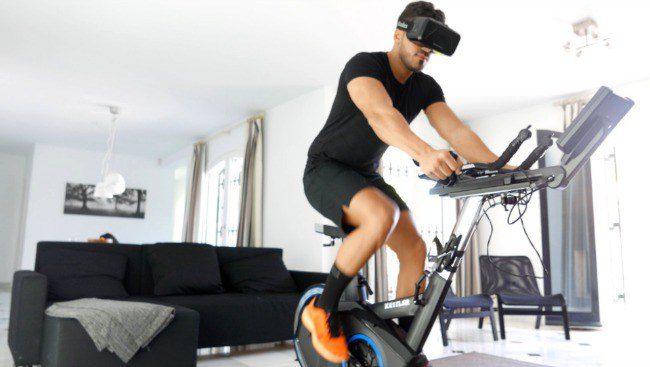When you climb onto a treadmill or a recumbent bike and set the speed or resistance level, you can expect a consistent level of output. In other words, if you’re on a treadmill and suddenly speed up or stop, it won’t give a damn. You tell the machine how hard or fast you want to go, and it will force you to comply until you change the settings accordingly. Virtual reality exercise, on the other hand, will only push you as hard as you push yourself.
The Virtual Reality Institute of Health and Exercise offers an invaluable resource for filtering VR games by how hard they push you, based on calorie burn rates. On the lowest end of the spectrum are “Walking Equivalent” experiences like Superhot that burn 2-4 calories per minute and, on the opposite end, The Thrill of the Fight holds the top honor for a whopping 15+ calories per minute.
While these are great for giving VR exercisers an objective benchmark for choosing a VR exercise game, it’s worth recognizing that an individual’s personal experience is going to be extremely subjective. In my own experience using Superhot, I burned about 5 cal/min and in The Thrill of the Fight, I burned about 14.5 cal/min.
While my own experience was very close to their findings, they still fell just outside their given ranges, and your own experience could vary wildly based on your own unique set of fitness and exercise variables. The VR Institute explains this in their own methodology. So, while using their ratings are extremely useful for offering a glimpse of the calorie burning potential these games offer, it’s still only an estimate.
If VR exercise is something you take seriously for achieving fitness and health goals, it’s worthwhile to a) determine what intensity levels you are striving for, and, b) determine what intensity levels your games are giving you.
Determine Your Intensity Goals
Intensity, as I use it in this article, is a percentage of your maximum heart rate. Your maximum heart rate (HR) is the absolute highest number of beats per minute your heart can pump under maximum load. To determine your estimated maximum HR simply calculate 220 – (minus) your age. This is a quick and easy way to get your HR estimate, although there are other, more accurate, methods. You can use this chart to calculate what heart rate zone corresponds to the given training effect.

Each intensity zone has a practical benefit that can be employed into your VR exercise regimen. In general, the lowest three zones (50-80%) can be sustained over prolonged periods, and the highest zones (80%-100%) should only sustain for shorter durations before allowing your HR to drop closer to 80% to recover your stamina before climbing up above 80% again. The Thrill of the Fight, for example, is structured like a traditional boxing match, so you’ll only be in the orange/red zone for three 3-minute rounds before getting a one-minute break in between. This is a sensible approach.
Determine Your VR Intensity Output
The best way to determine how intense your VR exercise sessions are is to use a monitor to track your HR. The two most popular consumer monitors on the market are optical and electrical. Optical sensors are typically worn on your wrist and use an emitted light to measure blood flow. Optical sensors are less accurate than electrical sensors, especially when it comes to tracking sudden spikes or drops in HR fluctuation. In my experience, this makes them great for tracking runs and bikes, but less so for VR fitness. I recommend using an electrical sensor like the Polar H7 chest strap for tracking in VR.
Whether you use an optical or an electrical sensor, you’ll want your HR measurements to be exported to an app that will visually illustrate your HR zones.

Seeing your VR workouts depicted this way will enable you to determine how effective your workouts are in meeting your intensity goals.
Dialing in Intensity
Based on the measurements you’ve gathered, you can now adapt your workouts to meet your goals. If your HR is lower than you’d like, you can either push yourself harder by moving more energetically, adding a weighted vest, or choosing a more demanding game. If your HR intensity level is so high that you’re unable to sustain a prolonged workout at an effective pace, either back off how hard you exert yourself by selecting an easier difficulty level or by choosing a more moderate game. This will offer you the most productive use of your time.
What suggestions do you have for monitoring your intensity levels? Do you have a favorite HR monitor or app? Let us know in the comments below!


